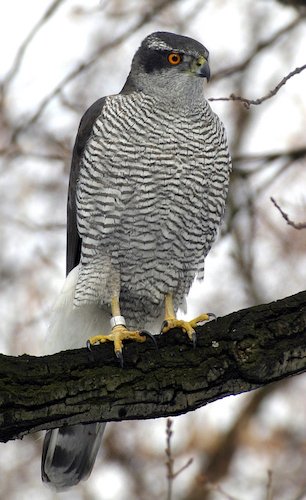Punjab

Birding Punjab
Punjab is a state in northwest India. The Indian state borders the Pakistani province of Punjab to the west, Jammu and Kashmir to the north, Himachal Pradesh to the northeast, Haryana to the south and southeast, Chandigarh to the southeast and Rajasthan to the southwest. The total area of the state is 50,362 square kilometres (19,445 square miles). The population is 24,289,296 (2000). Punjab’s capital is Chandigarh, which is administered separately as a Union Territory since it is also the capital of neighbouring Haryana. Other major cities of Punjab include Ludhiana, Amritsar, Patiala and Jalandhar. The Indus Valley Civilisation was one of the world’s first and oldest civilisations centred around Punjab.The Indian Punjab historically forms a part of the larger Punjab region, which includes some parts of Afghanistan, the Pakistani province of Punjab and the North-West Frontier Province, the Indian states of Haryana and Himachal Pradesh, parts of J&K and Delhi and the Union Territory of Chandigarh. Indian Punjab was trifurcated in the year 1966 leading to the formation of Haryana and Himachal Pradesh.
Agriculture is the largest industry in Punjab, it is the largest single provider of wheat to India. Others major industries include the manufacture of scientific instruments, electrical goods, financial services, machine tools, textiles, sewing machines, sports goods, starch, tourism, fertilisers, bicycles, garments, and the processing of pine oil and sugar. Punjab is considered to have the best infrastructure in India, this includes road, rail, air and river transport links that are extensive throughout the region. Punjab also has the lowest poverty rate in India at 6.16% (1999-2000 figures), and has won the best state performance award, based on statistical data compiled by the Indian Government. According to the Global Hunger Index 2008, Punjab has the lowest level of hunger in India.
Most of the Punjab is an alluvial plain, bounded by mountains to the North. Despite its dry conditions, it is a rich agricultural area due to the extensive irrigation made possible by the great river system traversing it. Punjab region temperature range from -2° to 40°C (MIN/MAX), but can reach 47°C (117°F) in summer and can touch down to -5°C in winter. The people that live in the state of Punjab are known as Punjabi.
-
Wikipedia
GNU Free Documentation License
http://en.wikipedia.org/wiki/Punjab_(India)
-
Number of bird species: 653
(As at December 2018)State Bird: Eastern Goshawk Accipiter gentilis
Number of endemics: 1 Breeding Endemic
Tytler's Leaf Warbler Phylloscopus tytleri
-
Threatened Flora & Fauna of Punjab
| By Jatinder Kaur Arora & Gurharminder Singh | Bishen Singh Mahendra Pal Singh | Hardback | 2022 | 88 pages, 100+ colour photos | ISBN: 9789394991231 Buy this book from NHBS.com
-
Chandigarh Bird Club
Facebook PageA unique group for city Bird watchers, Bird photographer, Ornithologist - to promote birding-bird watching - share information regarding birds of city and nearby areas - create awareness in citizens about importance of birds in overall environment - to identify different species of birds with help of this group
-
BS WII Harike Lake & Wetland Sanctuary
InformationSatellite ViewHarike Bird Sanctuary, in Punjab is a large wetland created on the River Sutlej. This shallow water body attracts large numbers of wintering waterfowl (c.200 species) and is home to many specialties. Birds like the White-crowned Penduline Tit, Indian Skimmer, Yellow-eyed Pigeon, Rufous-vented Prinia and Sind Sparrow can be found here. Harike was designated as a Ramsar site in March 1990 and has been identified as one of the sites for conservation under the Indian National Wetland Programme… -
BS WII IBA Sukhna Lake - Chandigarh
InformationSatellite ViewSukhna is a sanctuary for many exotic migratory birds like the Siberian duck, storks and cranes, during the winter months. The lake has been declared as a protected national wetland by the Government of India. -
WS Bir Gurdialpura
WebpageSatellite ViewJust like the diverse flora of the Bir Gurdialpura Sanctuary there is a rich fauna of this place as well. Some of the species of the fauna of Bir Gurdialpura Sanctuary are also endangered. Animals that form a part of the fauna at the Bir Gurdialpura Wildlife Sanctuary are jungle cat, hare, blue bull, peafowl, jackal, parakeets, black buck, etc. Some of the endangered animals that are found in this sanctuary include otter, pangolin, python and river dolphin. There is also a zoo and a deer park in this region which provides shelter to various kinds of animals. Hog deer, red jungle fowl, spotted owl, etc are some of the other members of the fauna at Bir Gurdialpura Sanctuary -
WS Jhajjar Bachauli
InformationSatellite ViewThis Sanctuary is situated 15 Km. from Anandpur Sahib city in the Government forest area of District Rupnagar. It has an area of 116.00 ha (i.e. 289 acres of which 218 acres area belongs to Village Jhajjar, 55 acres to village Bachauli and 16 acres to village Lamlehri). -
WS Takhani Rehmanpur
ReviewSatellite ViewCool place for a short trip, Takhni-Rehmapur Wildlife Sanctuary offers wide array of animals...
-
Ritz Plaza Hotel Amritsar
AccommodationThe hotel's 50 rooms and suites are spread over an aristocratic 2 acres on Mall Road, Amritsar's very elite locale. Ritz Plaza has many firsts to its credit - being the first centrally air-conditioned hotel in Punjab. In its own history it has hosted a galaxy of who's who, including a visit by the Queen of England
-
Status of Punjab Wetlands
ArticleWetlands provide habitat for a wide variety of plants, invertebrates, fish, and larger animals, including many rare, threatened, or endangered species. The plants and animals found in wetlands include both those that are able to live on dry land or in the water and those that can live only in a wet environment…
-
Birds of Chandigarh
BLOGLast updated 2010 - Sightings of birds posted on birds-chandigarh google group will be uploaded on this blog for future reference. Others items will include trip reports, list of wildlife sanctuaries and national parks, birding hotspots, conservation measures being taken etc.

